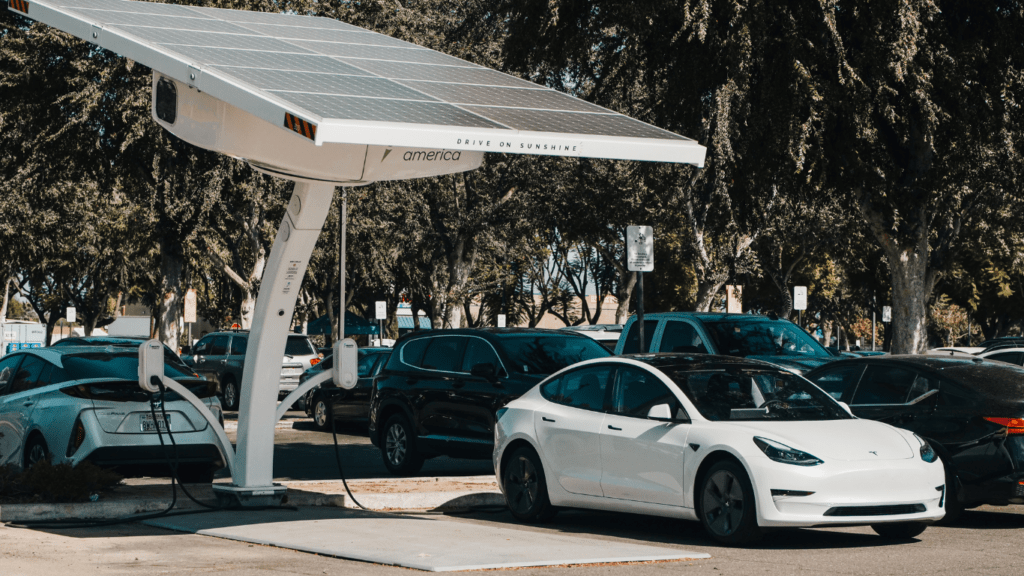Historical Overview of Electric Vehicles
Electric vehicles (EVs) have a rich history dating back over a century, marked by early experiments and significant innovations.
Early Developments and Key Innovations
In the 1830s, inventors developed early EV prototypes. For example, Scottish inventor Robert Anderson created a crude electric carriage.
By the late 19th century, EVs gained popularity. In 1899, Camille Jenatzy’s Jamais Contente set a land speed record of 65 mph, showcasing the potential of electric propulsion.
Early 20th century, EVs made up around one-third of all vehicles on US roads. By the 1910s, however, internal combustion engines (ICEs) began to dominate due to advances in gasoline engine technology and the mass production techniques pioneered by Henry Ford.
Growth Factors and Technological Advancements
EV resurgence began in the late 20th century. The oil crisis of the 1970s renewed interest in alternative energy sources, propelling EV development. In the 1990s, automakers like General Motors introduced models like the EV1.
Meanwhile, significant technological advances in batteries, particularly lithium-ion technology, boosted EV ranges and performance.
Entering the 21st century, Tesla’s Roadster redefined EV expectations with its long range and high performance. Government regulations, subsidies, and advancements in battery technology, like solid-state batteries, further accelerated growth.
Current Trends in Electric Vehicle Adoption
Electric Vehicle (EV) adoption is growing rapidly worldwide, thanks to technological advancements and increased environmental awareness.
Geographic Adoption Patterns
Adoption rates vary greatly by region. Europe leads with countries like Norway, where EVs comprised 54% of new car sales in 2020 (Statista).
California, which accounts for nearly 50% of the United States’ EV sales, is another significant market. In Asia, China dominates with over 1.2 million EVs sold in 2020, making up 41% of the global EV market (IEA).
Developed nations often have significant EV incentives, such as tax rebates and charging infrastructure support, which accelerate adoption. Emerging markets are slower, but countries like India are investing in EV-friendly policies to reduce pollution and oil dependency.
Consumer Preferences and Market Demand
Consumers increasingly prefer EVs for their environmental benefits and lower running costs. A 2020 Deloitte survey stated that 64% of car buyers globally consider EVs due to reduced maintenance and fuel expenses.
Urban areas, with concerns over air quality and stringent emission regulations, show higher EV demand than rural regions. Luxury brands like:
- Tesla
- BMW
appeal to consumers interested in high performance and innovative technology, while affordable models like the Nissan Leaf attract cost-conscious buyers.
Many consumers perceive EVs as future-proof, given the trend toward sustainability. Advances in battery life and charging speeds further enhance demand, making EVs more practical for everyday use.
Challenges Facing Electric Vehicle Expansion

Despite the growing popularity of electric vehicles, several challenges hinder their widespread adoption and expansion.
Infrastructure and Charging Issues
Charging infrastructure development lags behind the increasing EV adoption rates. Public charging stations are sparse in many regions, making long-distance travel inconvenient.
Urban areas fare better, yet rural locations often lack sufficient facilities. Charging speeds also vary, with many stations providing slow charging that inconveniences drivers. Investments in fast-charging networks and home charging solutions could mitigate these issues.
Economic and Policy Barriers
High upfront costs of electric vehicles deter many potential buyers. Although long-term savings on fuel and maintenance exist, initial expenses can be prohibitive.
Government incentives like tax credits and rebates help offset costs, but not all regions offer these benefits. Policy inconsistency across different areas creates confusion and affects consumer confidence. Uniform and supportive policies can promote steady EV market growth.
Future Prospects of Electric Vehicles
Electric vehicles (EVs) continue their upward trajectory. The future holds significant promise for further advancements and market expansion.
Innovations on the Horizon
Battery technologies are evolving rapidly. Solid-state batteries, for example, offer higher energy density and faster charging times compared to traditional lithium-ion batteries.
Automakers like Toyota and BMW are investing heavily in this technology. Another innovation is wireless charging. Companies such as WiTricity are developing systems that allow for automatic charging when EVs park over special pads.
Advanced driver-assistance systems (ADAS) are also being integrated into EVs, providing features like autonomous driving and improved safety.
Predictions for Market Growth
- The EV market is expected to grow substantially.
- According to BloombergNEF, EVs could account for 58% of global passenger vehicle sales by 2040.
- Countries like China and those in Europe are projected to lead this growth, driven by stringent emission regulations and government incentives.
- The International Energy Agency (IEA) also predicts the number of EVs on the road could reach 145 million by 2030 under current policies.
- If countries adopt more ambitious targets, this number could rise even higher




